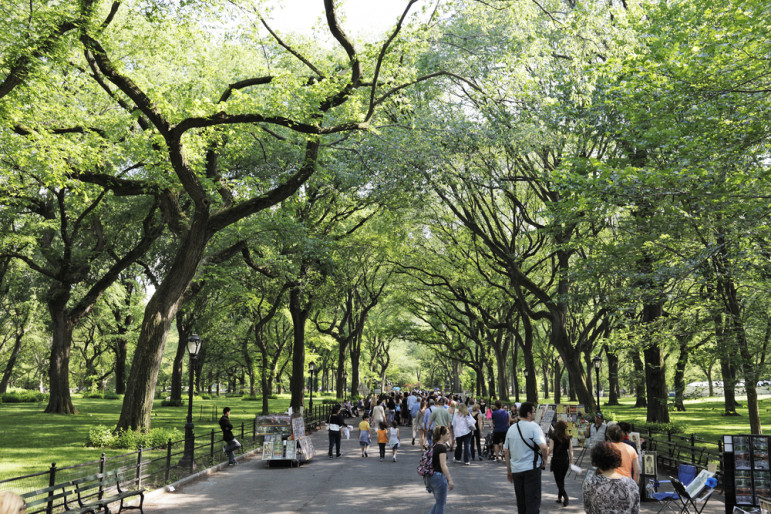
September 1, 2015; Digiday
Have you heard of Periscope? The nonprofit Central Park Conservancy in NYC is all over it. They host trivia walks through the Park on Wednesdays with the tag #WednesdayWander, livestreaming the walks via Periscope. Ann Sublett, social media senior manager at the Central Park Conservancy, leads the walks and answers questions from viewers via the livestream.
Management of Central Park was taken over by the nonprofit Central Park Conservancy in the 1980s. They manage and restore the crown jewel of NYC in a partnership with the city and are responsible for raising 75 percent of the Park’s $65 million budget. Noting that most people don’t know much, if anything, about the role of Central Park Conservancy, Sublett says, “A great part of our strategy is building awareness and telling people who we are (Central Park Conservancy) and what we do.”
Much of the recent success of the Conservancy has been the ability to connect with and build on New Yorker’s love for Central Park via social media. There is now a very solid presence on multiple social media platforms, including Tumblr, Facebook, Instagram, Vine, and Twitter.
Sign up for our free newsletters
Subscribe to NPQ's newsletters to have our top stories delivered directly to your inbox.
By signing up, you agree to our privacy policy and terms of use, and to receive messages from NPQ and our partners.
What has worked, and what other nonprofits can learn
Yes, it’s true that Central Park has stunning visuals, millions of visitors, and lots of acreage. Most nonprofits don’t have such resources at their command. However, with a good strategy, it is possible to learn ideas that smaller nonprofits can adapt. Following is a review of their successes:
- Different content is offered based on the platform. On Facebook and Twitter, there are general announcements, such as closures and events. Instagram is their site for the “Instameets,” in which a number of group of Instagram “influencers” take a walk-and-talk through the Park, with Sublett pointing out interesting park features. The “influencers” post pictures for their followers.
- Strategic use of hashtags. These are used consistently, communicated to the public in many ways, and shared in announcements. Examples include #WednesdayWander for Periscope, #Seeyourcity for Vine, #CentralParkMoments for Instagram and #Poweredbyyou for Twitter. Since starting this last fall, over 9,000 pictures on Instagram have been tagged #CentralParkMoments. Because of the variety of programs, locations and audiences, there are several hashtags. Most nonprofits may find using only one, or maybe a second one for events, is the best plan. On Tumblr, the tag #what am I seeing in Central Park? indicates pictures of interesting animals or plants, unusual berries or flowers in bloom.
- Make it easy for others to participate in the platforms. Visitors are encouraged and empowered to create and contribute content. The example above with the Instagram “influencers” could easily be recreated with many nonprofits. Nonprofits could invite their followers who have significant followings to attend a special meeting in which unique features of the programs are shared, behind-the-scenes experiences are available or advance notices are shared. Art museums use Instagram influencers prior to grand openings of their shows to help create buzz.
- Lots of pictures. With a presence on multiple platforms, and by publicizing the hashtags, it is easy to capture those multitudes of pictures that are taken each day. People explore or interact with the park through the pictures, so that they become more familiar with and strengthen their relationship with the park, even before arriving.
- A clear focus. The Conservancy’s goal is to build engagement with the public towards the Park, but to also explain the relationship between the Conservancy and other nonprofits that function within the Park, such as City Parks Foundation, SummerStage Concerts, and the Wildlife Conservation Society, which maintains the Central Park Zoo. All pictures uploaded by the staff have captions that capture curiosity with trivia, descriptions of locations often unknown to the general public, and links to the website.
- Have an ask, but don’t lead with the ask. After staff post an enticing picture, and give a little backstory, there is an “ask” that lets those who are interested know why donations are needed and how to contribute. This info is low-key, but a very powerful ask. By the time one has enjoyed the picture and read the info, when the statement appears that explains how the Conservancy is funded, readers are already engaged.
- Experiment. The livestreamed #WanderWednesday walks using Periscope needed to build their following. The Conservancy now has over 8,000 followers on Periscope. Trying out a new platform as an experiment, with a set time frame, and then evaluating the results is a great way for a nonprofit to find its audience.
—Jeanne Allen











